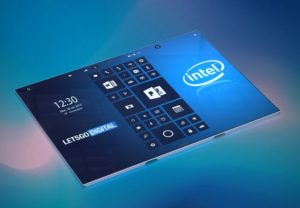The smartphone industry is changing rapidly and so is the specifications on the smartphones. 2018 witnessed an era of various innovative and bold technical implementations on our smartphones and it seems 2019 is not going to be an exception when especially when it comes down to the design aspect of the smartphones. We are living in an era of competition which makes the fastest processor out there, that used to be reserved for high-end devices, available to us at a budget-friendly price. An era where a ₹20,000 smartphone can go toe-to-toe with a ₹70,000 smartphone in almost every aspect. In terms of performance, every smartphone nowadays is as good as they come. Smartphone users are now focusing on how their device looks because that seems to be the only way smartphones can be distinguished in this day and age. ‘All the smartphones look the same more or less’ has been the public consensus in the smartphone market and this is putting immense pressure on the manufacturers. This need for something different is probably what propelled the technical wonders like mechanical pop-up cameras, slider phones, punch-hole cameras in our devices. The search has not stopped yet and it looks like the next turn of events for our smartphones would be flexibility. With companies like Samsung, Xiaomi, and Huawei already working on their respective versions of a folding smartphone, flexibility could be the future in the smartphone market.
The latest entrant to this trend is Intel, which is quite surprising given the company manufacturers chips rather than smartphones. Nevertheless, Intel has reportedly filed a patent for its foldable smartphone under the title ‘Electronic device with foldable display panels’ with World Intellectual Property Office (WIPO) and the United States Patent and Trademark Office (USPTO). The patent filing was first spotted by LetsGoDigital and shows a device that can be unfolded three times.
The patent filing drawings suggest three possible scenarios the phone can be used in a three-sided tent mode with all sides active, a traditional laptop mode with an in-display keyboard, and an e-reader format.
The device is compromised of three display parts when unfolded and each section comes with 2 cameras, which makes up for six cameras in total. The device also comes with a stylus pen which can be accommodated in the space formed by the folds and is presumably held into place magnetically.
This design approach from Intel for a foldable phone looks to be promising, nevertheless, the phone might never see the light of the day since it is just a patent and smartphone manufacturers are known for filing patents that they never turn into real-life products.
Also Read:
Vivo 15 Pro With Pop-up Camera Likely to Launch in India soon
Asus Launched its ZenBook Series Laptop in India: Price and Specifications


